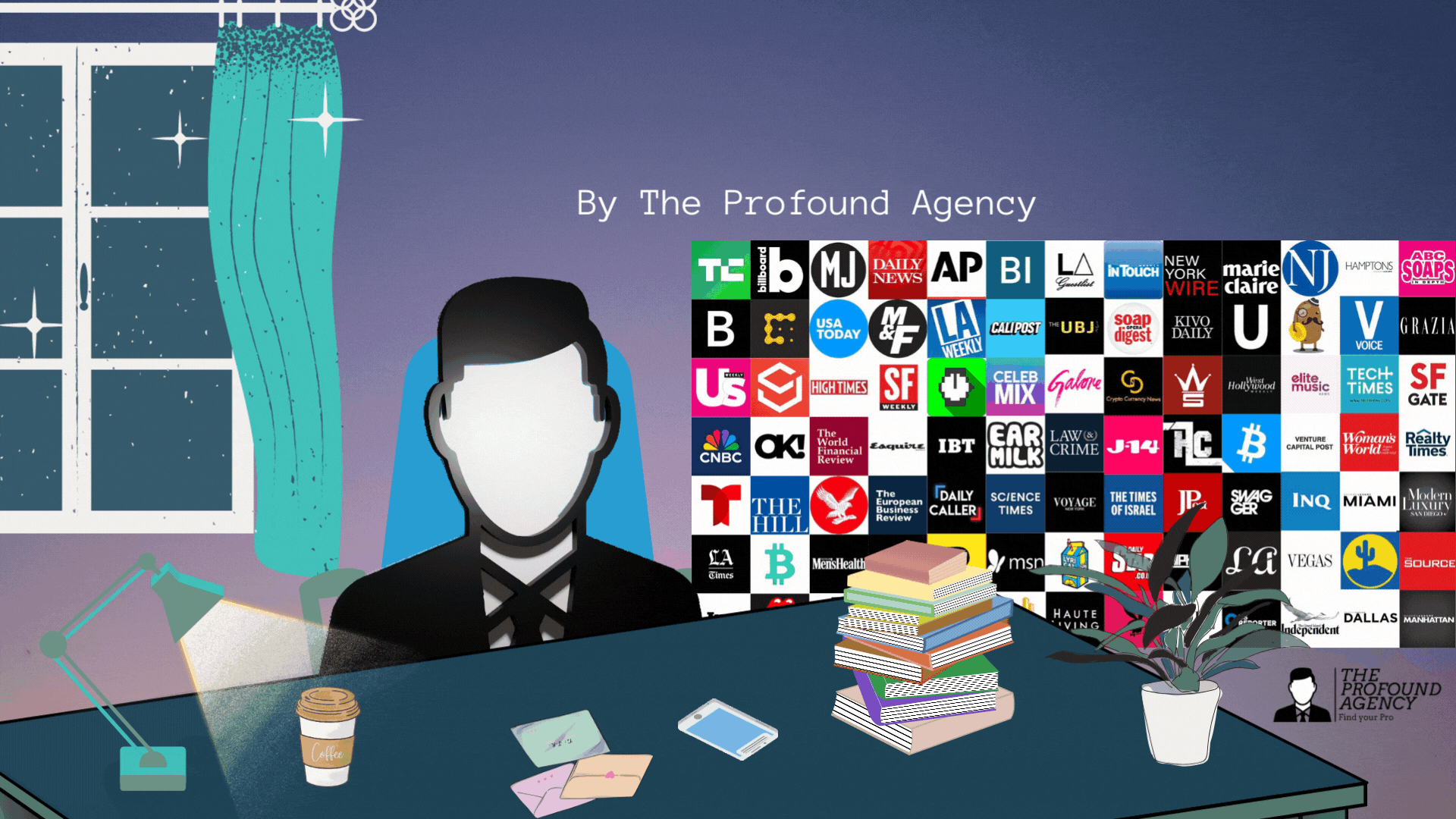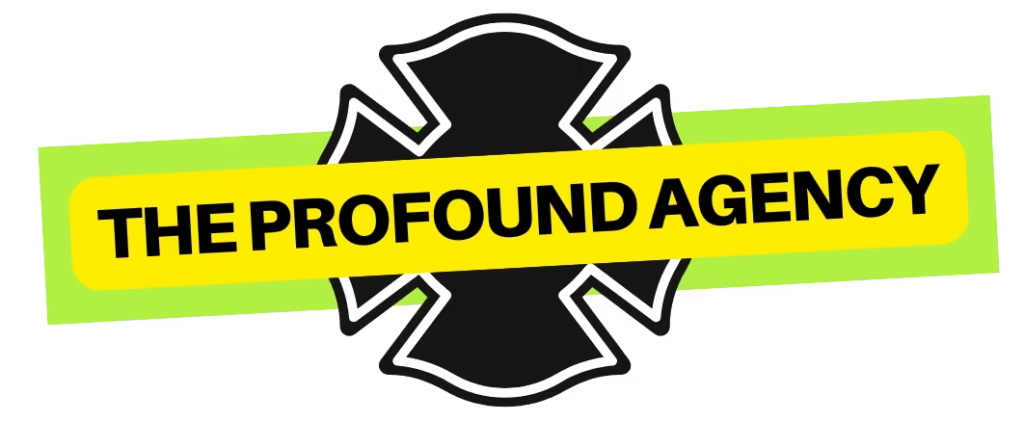Are you an extraordinary talent seeking to work or live in the United States? The O-1 visa might just be your golden ticket. Reserved for individuals with exceptional abilities in various fields, the O-1 visa is highly sought after by professionals in arts, sciences, business, athletics, and other disciplines. However, navigating the application process can be daunting. One often overlooked but powerful tool in your arsenal is public relations (PR). Understanding the O-1 Visa Before delving into the role of PR, let’s briefly understand what the O-1 visa entails. The O-1 visa is designed for individuals who possess extraordinary ability or achievement in their field. This can include renowned artists, groundbreaking scientists, leading business executives, or world-class athletes. To qualify, applicants must demonstrate a high level of expertise and recognition in their field, typically evidenced through awards, publications, media coverage, and other achievements. Why PR Matters In the realm of the O-1 visa application, perception is key. Immigration officials need to be convinced not only of your exceptional abilities but also of your significance and impact within your industry. This is where PR comes into play. Public relations strategies can help amplify your achievements, enhance your professional reputation, and create a compelling narrative that strengthens your visa application. Building Your Personal Brand At the heart of effective PR for O-1 visa applicants is the development of a strong personal brand. Your personal brand encapsulates who you are, what you’ve achieved, and the value you bring to your field. Through strategic PR efforts, you can shape and amplify this brand, positioning yourself as a standout talent in your industry. Crafting a Compelling Narrative Central to a successful O-1 visa application is crafting a compelling narrative that showcases your extraordinary abilities and achievements. PR professionals can assist in shaping this narrative, highlighting key milestones, accolades, projects, and contributions that underscore your significance within your field. By weaving together a cohesive and impactful story, you can make a compelling case for your visa approval. Media Exposure and Validation Media coverage plays a crucial role in bolstering your O-1 visa application. Positive press coverage, interviews, features, and profiles not only validate your accomplishments but also amplify your visibility and credibility. PR experts can help secure media placements in reputable outlets, ensuring that your achievements receive the recognition they deserve and bolstering your case for the visa. Establishing Industry Connections Networking and building relationships within your industry can also strengthen your O-1 visa application. PR professionals can facilitate introductions to key stakeholders, influencers, and industry leaders who can provide testimonials, letters of support, or other forms of validation for your extraordinary abilities. These connections can add further weight to your application and demonstrate the respect and recognition you command within your field. Conclusion Securing an O-1 visa requires more than just exceptional talent—it demands strategic positioning, effective communication, and compelling storytelling. By leveraging the power of public relations, you can amplify your achievements, enhance your professional reputation, and increase your chances of visa approval. Whether through media exposure, personal branding, or industry connections, PR can be a game-changer in your journey to the United States. So, if you’re an extraordinary talent eyeing the land of opportunity, don’t underestimate the role of PR in realizing your American dream. View our list of publications!
10 Ways to Get Featured in Media: A Guide for Business Success
Good PR is vital for any business looking to thrive and expand. However, getting featured in media is not easy. Traditional PR methods can often come with hefty price tags, particularly when engaging a PR team. So, how can you elevate your business and secure media coverage without breaking the bank? We’ve curated a list of 10 top tips on how to get published in the media without relying on a PR team. PR Without a PR Team – Your Guide to Success Bonus Tip: Consider PR Stunts: Stand out from the crowd with attention-grabbing PR stunts that capture journalists’ attention and amplify your brand’s visibility. In conclusion, getting published in the media doesn’t have to be a daunting task, even without a dedicated PR team. Furthermore, by implementing these strategies, you can effectively elevate your brand’s presence and secure valuable media coverage. Looking for Even More Exposure? Try The Profound Agency! For businesses seeking guaranteed media placement and exposure, consider The Profound Agency. Specializing in paid media opportunities, we help clients get published in major media publications without the hassle of retainers. With over 750+ publishing opportunities, we tailor our services to fit your needs and budget. Visit The Profound Agency or call/text us at 9084484001 to learn more and start elevating your brand today! View the Press Data Sheet at: https://press.theprofound.agency
Engage Employees: How CEOs Can Improve Their Brand
It’s no secret that organizations flow from the top down. Being at the bottom of an organization, the CEO can seem like a mythical creature. They can be someone you rarely see or encounter, let alone, communicate with. Think about your organization for a minute. How much face time is a low-ranking employee getting with upper management? In many cases, the answer is none. Look at it from the point of the worker. It can be easy to feel like a cog in the machine, with no real connection to the mission of what you’re doing. We’ll explore ways CEOs can engage employees throughout the organization by building the brand and communicating it effectively to the organization. 🧑💼 A CEO’s Mission Every company is different, and every CEO is different. What works for one company may be absurd for another, but there are core tenants of the job that remain consistent. As a leader of the organization, it’s your role to oversee the mission and set the tone. Although many CEOs may have a clear vision of what they want of the brand, they often face an uphill battle in communicating that vision to employees and the market. Leading an organization through effective brand communication is an art. It motivates and envigorates at its best and demoralizes and demotivates at its worst. So how can a CEO engage employees to ensure he’s communicating positively with employees? 🎯 Brand Engagement If you’re a mythical creature, embrace it. Shoot for the moon, be a power player, and by all means, focus on the brand. Your brand’s vision, mission, and values will not only engage employees but they will reach your customers and the market too. If your brand’s vision, mission, and values are a mystery to you, you should start here. Understanding and articulating the vision & dream of your brand is essential. Also, the organization’s mission and values are the core tenets that will fuel your company culture. ✍️ Engage Employees With The Brand Once a clear vision, mission, and set of values are established for your brand, the next step is crafting a communication strategy. Center it around engaging both employees and the market with your brand. Direct your focus toward the fundamental tenets of your brand. Consistent and impactful communication from the brand will reinforce brand standards and foster unity among employees. View your organization as a dynamic entity, driven by its workforce. Establishing a core connection between employees and the brand should be the core component of a CEO’s comms strategy. It should center around effectively communicating the core principles of the brand. By doing this, a CEO will empower employees to grasp their integral role in realizing the brand’s overarching mission. This cultivates a collective mindset among the team, guided by the brand’s values and inspired by its vision. 🏗️ Build Brand Notoriety A good marketing team will have a communications & PR strategy associated with the brand. This strategy should incorporate public-facing opportunities for the CEO to communicate the Brand’s mission and vision to the market while adhering to the brand’s core values. It’s oftentimes understated the benefits that opportunities have like this for the organization’s employees. Employees dedicate a significant portion of their lives to the company. So for an employee, it’s important to feel like you belong to something that’s gaining in success. Seeing the company’s management in the public representing the brand’s mission is a great way to do this. As a CEO, if you can make the organization’s wins feel like the employees win too, you’ll win. You’ll be leveraging the brand to lead the organization from the front rather than from behind. 📣 Amplifying Communications Not every CEO has a comms team, so how can CEOs build their brand and communicate more effectively in the market without echoing the same message to the same social media following? This is a problem many business owners and CEOs face as they go to market. Building brand awareness isn’t easy, and it requires a CEO to branch out and build opportunities. Do this by speaking, making public appearances and statements, and engaging with key stakeholders in their industry to build credibility. Create content and amplify that content through a number of third-party channels that go beyond the reach of your brand’s current network. Growing the brand requires branching out into new territory, and as the CEO this is on you to be the leader and see this through. 📋 Set Goals And Measure Success To execute a communications strategy effectively, it is good to have a good set of goals. Set key performance indicators to know that what you are doing is working or successful. Defining success through your comms strategy isn’t always easy or clear. Setting some goals and measuring success can help you determine the effectiveness of your communications for future planning. The long-term benefit of content is that it will build a digital foundation. It begins to support your brand and build credibility with algorithms and search engines across the web. We live in an age of ever more served content. By regularly distributing clear communications about your brand in reputable places, you’ll naturally engage employees who are following the brand’s story. This gives employees something to dig into. And by leveraging paid media, CEOs can spread this message even further. 📰 Paid Media Paid media is a means of leveraging opportunities created by platforms to place content. If you don’t have a team of skilled PR people with contact books or the money to pay some PR firm a retainer to maybe get you features, what else are your choices? At the Profound Agency, we understand the challenges CEOs face developing their brands and communicating that to the world. That’s why we’ve developed a retainer free publishing model that aggregates hundreds of publishing and media opportunities from News, TV, and Print and make that available to clients for free. We price each publication individually. This means you can select
Learn How to Publish Your News Story: Unlock the Power of Paid Media Opportunities
In today’s fast-paced digital world, getting your news story, cause, or message in front of the right audience is more crucial than ever. With countless channels and platforms vying for attention, the challenge lies in not just creating compelling content but also ensuring it reaches the widest possible audience. But fear not! In this article, we’re going to demystify the process and show you how to unlock the power of paid media opportunities to amplify your message and reach audiences far and wide. Understanding the Difference First things first, let’s talk about the difference between paid media opportunities and organic marketing opportunities. While both aim to increase visibility and engagement, they operate on different principles. Organic marketing relies on building an audience through content creation, social media engagement, and other non-paid channels. It’s about nurturing relationships and cultivating a community around your brand or cause. On the other hand, paid media opportunities involve investing in placements and promotions to guarantee visibility in high-traffic publications and platforms. It’s like having a VIP pass to the front row of the digital world, where your story gets noticed by the right people at the right time. The Appeal of Paid Media Publishing So why choose paid media opportunities over organic marketing? The answer lies in the unparalleled reach and targeting capabilities they offer. With paid media, you have the power to reach millions of potential customers or supporters with just a few clicks. But it’s not just about reach; it’s also about control. With paid media, you have full control over where and how your story is presented. You can choose the publications and platforms that align with your audience and tailor your message to resonate with their interests and preferences. At Profound Agency, we specialize in helping clients leverage paid media opportunities to amplify their stories, causes, or messages. With over 750+ publishing opportunities at our fingertips, we can ensure your story gets the attention it deserves. Ready To Get Published? Ready to unlock the power of paid media opportunities for your own story, cause, or message? Here’s how you can get started: Conclusion In conclusion, paid media opportunities offer a powerful way to amplify your message and reach audiences on a scale that organic marketing alone simply can’t match. By leveraging the expertise of Profound Agency, you can ensure your story gets the attention it deserves and make a lasting impact on your audience. So what are you waiting for? Let’s publish your news story here and unlock the full potential of paid media opportunities! View the Publication Data Sheet: https://press.theprofound.agency Search Publications Below or at: https://theprofound.agency/#medialist
Amplifying Impact: How Non-Profits Can Utilize Paid Media Distribution to Share Their Mission
In the bustling landscape of digital media, non-profit organizations face the perpetual challenge of standing out amidst the noise to share their mission with the world. With limited resources and fierce competition for attention, traditional organic outreach may not always suffice. However, in this age of digital marketing, non-profits have a powerful tool at their disposal: paid media distribution. By strategically investing in paid advertising and storytelling, non-profits can expand their reach, engage new audiences, and drive meaningful impact for their cause. The Power of Paid Media Distribution Paid media distribution refers to the strategic allocation of funds to promote content across various online platforms such as social media, search engines, and relevant websites. Unlike organic reach, paid distribution ensures that content reaches a broader and more targeted audience. For non-profits, this means the opportunity to amplify their message and garner support from individuals who may not have otherwise encountered their cause. Crafting Compelling Stories At the heart of effective paid media distribution lies compelling storytelling. Non-profits must leverage the power of narrative to evoke emotion, inspire action, and foster connection with their audience. Whether it’s sharing personal anecdotes, highlighting success stories, or illustrating the impact of their work, storytelling humanizes the mission and creates a lasting impression on viewers. Targeted Audience Engagement One of the key advantages of paid media distribution is its ability to precisely target specific audience segments based on demographics, interests, and online behavior. Non-profits can leverage this capability to reach individuals who are most likely to resonate with their cause and take action. By tailoring messaging to different audience segments, non-profits can maximize engagement and drive conversions effectively. Leveraging Different Platforms Paid media distribution encompasses a wide range of platforms, each offering unique opportunities for non-profits to connect with their audience. Social media platforms like Facebook, Instagram, and Twitter provide a dynamic space for storytelling through visuals, videos, and interactive content. Meanwhile, search engine advertising enables non-profits to capture the attention of individuals actively seeking information related to their cause. By diversifying their approach and experimenting with different platforms, non-profits can optimize their reach and engagement across various channels. Measuring Impact and Optimizing Strategies As with any marketing initiative, measuring the impact of paid media distribution is crucial for non-profits to assess the effectiveness of their efforts and refine their strategies accordingly. By tracking key metrics such as reach, engagement, conversions, and return on investment (ROI), non-profits can gain valuable insights into what resonates with their audience and adjust their approach for maximum impact. Additionally, A/B testing different ad creatives, targeting criteria, and messaging allows non-profits to continuously optimize their campaigns and improve performance over time. Conclusion In an increasingly digital world, non-profits must adapt and leverage the power of paid media distribution to share their mission and drive meaningful change. By crafting compelling stories, targeting specific audience segments, and utilizing various online platforms, non-profits can amplify their impact and reach a broader audience than ever before. With strategic planning, creative execution, and a commitment to measuring results, paid media distribution can be a powerful tool in the arsenal of non-profits striving to make a difference in the world. View a list of our Publications: https://press.theprofound.agency Visit our website at: https://theprofound.agency
Mastering SEO in 2024: The Ultimate Guide to Boosting Your Website’s Visibility
User Experience Optimization: In 2024, search engines prioritize user experience. Ensure your site is mobile-friendly, has fast loading times, and offers an intuitive user interface. Google’s algorithms favor websites that provide a seamless experience for visitors. Quality Content is King: The importance of high-quality, relevant content cannot be overstated in 2024. Develop content that answers users’ queries, addresses their pain points, and provides valuable insights. Long-form content, interactive media, and multimedia elements can enhance user engagement, signaling to search engines that your content is authoritative and comprehensive. AI and Machine Learning Integration for SEO: As search engines become more sophisticated, the integration of artificial intelligence (AI) and machine learning is crucial for SEO success. Leverage AI tools to analyze user behavior, personalize content, and optimize your website based on real-time data. Stay updated on the latest AI-driven SEO tools to gain a competitive edge. Voice Search Optimization for SEO: With the rise of voice-activated devices and virtual assistants, optimizing for voice search is essential in 2024. Users often phrase voice queries differently than typed searches, so focus on natural language and long-tail keywords. Additionally, provide concise and informative answers to common questions your audience might ask. Local SEO Strategies: For businesses targeting local markets, local SEO remains a key focus. Ensure your Google My Business (GMB) profile is accurate and up-to-date, encourage positive customer reviews, and optimize your website for local keywords. Geo-targeted content and backlinks from local sources can also boost your visibility in local search results. Schema Markup Implementation for SEO: Schema markup enhances the way search engines interpret your content, providing rich snippets that stand out in search results. Utilize schema markup to provide additional context about your content, products, and services. This can lead to higher click-through rates and improved visibility in search engine results pages (SERPs). Video Content Optimization: Video content continues to gain popularity, and search engines recognize its significance. Optimize your video content by providing detailed metadata, including relevant keywords in titles and descriptions. Hosting videos on your website can also contribute to increased dwell time, positively impacting your SEO. Secure Website with HTTPS: Website security is a top priority for search engines. Ensure your website is secure by using HTTPS. Not only does this provide a safer browsing experience for your users, but it also signals to search engines that your site can be trusted. Regularly review and update your strategies to adapt to the ever-changing digital landscape. Schedule an introduction to get started with your SEO strategy in 2024! View a full list of Premium Press Distribution at https://press.theprofound.agency View our SMM Panel at https://socialpanel.top Go to our Homepage at https://theprofound.agency
Exploring the Divide: Paid Media vs. Pitched Media and the Case for Paid Promotion
In the ever-evolving landscape of media and communication, businesses and individuals alike are faced with a multitude of options to showcase their products, services, and ideas. Two foundational marketing channel strategies are paid media and pitched media. While both aim to garner attention and visibility, they differ significantly in their approaches and outcomes. In this article, we will delve into the distinctions between the two and explore the reasons why paid media could be a more effective option for certain objectives. Paid Media: Paid media refers to any form of advertising or promotion for which a company pays a fee to a third-party platform or publisher. This encompasses a wide range of channels, including social media advertising, sponsored content, display ads, pay-per-click campaigns, sponsored posts, in-video ads, news segments, and more. Essentially, it involves exchanging money for exposure. Pitched Media: Pitched media, on the other hand, relies on the art of persuasion and relationship-building. This method involves reaching out to journalists, bloggers, or influencers with a compelling pitch, hoping they will find the story interesting enough to cover organically. It relies heavily on the merits of the pitch and the persuasiveness of the communicator. Key Differences: Control over Placement and Timing: Guaranteed Exposure: Speed of Implementation: Measurable Metrics: Reasons Why Paid Media Could Be Better: While both paid and pitched media have their merits, the choice between them ultimately depends on the goals and timelines of a particular campaign. For businesses seeking immediate and measurable results with a high degree of control, paid media is often the preferred avenue. However, the ideal approach may involve a strategic combination of both methods, leveraging the strengths of each to create a comprehensive and effective media strategy. View a list of our publications at https://press.theprofound.agency Visit our Website at https://theprofound.agency
Leveraging Paid Media for Successful Reputation Management: A Guide for Major Brands
Introduction: In the digital age, a brand’s reputation is a delicate and crucial aspect of its success. With the power of social media and online platforms, news, both positive and negative, can spread like wildfire. Major brands often find themselves navigating through a landscape where a single misstep can have lasting consequences. However, strategic reputation management, coupled with the effective use of paid media, can help major brands not only weather storms but also enhance their image. Understanding the Landscape: Before delving into the strategies for successful reputation management, it’s essential to grasp the dynamics of the digital landscape. Social media platforms, review sites, and news outlets all contribute to shaping public perception. Major brands need to be vigilant in monitoring these channels for mentions and feedback. The Role of Paid Media in Reputation Management: Paid media can be a powerful tool in shaping and controlling the narrative surrounding a brand. Here’s a step-by-step guide on how major brands can leverage paid media for effective reputation management: 1. Proactive Brand Messaging: Establish a strong and positive brand narrative through paid media campaigns. Highlight your brand values, social responsibility initiatives, and achievements. Consistent, positive messaging helps build a solid foundation that can counteract negative publicity when it arises. 2. Targeted Advertising: Utilize targeted advertising to reach specific demographics and counteract negative perceptions. Craft messages that address concerns or misconceptions, and ensure these messages reach the right audience through platforms like Facebook, Instagram, or Google Ads. 3. Influencer Partnerships: Collaborate with influencers who align with your brand values. Influencers can be powerful advocates, helping to reshape public opinion and present a positive image. Paid partnerships can amplify your message and lend credibility to your brand. 4. Crisis Response Ads: In the event of a crisis, respond promptly with well-crafted crisis management ads. These ads should address the issue directly, convey empathy, and communicate the steps being taken to rectify the situation. Paid media ensures these messages are disseminated widely. 5. Social Listening Tools: Invest in social listening tools to monitor brand mentions and sentiment in real-time. This allows for quick response to emerging issues and helps major brands stay ahead of potential reputational challenges. 6. Sponsored Content: Create sponsored content that reinforces positive brand narratives. This could include articles, videos, or other media that highlight your brand’s strengths, achievements, and positive customer experiences. Amplify this content through paid channels for maximum reach. 7. Online Reputation Management (ORM) Ads: Develop ads specifically geared towards online reputation management. These ads can address common concerns or misconceptions and redirect search engine results towards positive content about your brand. 8. Data Analytics for Continuous Improvement: Utilize data analytics to measure the effectiveness of your paid media campaigns. Track key performance indicators (KPIs) such as brand sentiment, engagement rates, and conversion metrics. Analyzing the data allows for continuous refinement of your reputation management strategies. Conclusion: In a world where information travels at the speed of light, major brands must be proactive in managing their reputation. Paid media provides a valuable arsenal of tools to shape narratives, counteract negativity, and build a resilient brand image. By integrating these strategies into their overall marketing approach, major brands can not only protect their reputation but also foster a positive and enduring relationship with their audience. Reputation management is an ongoing process, and with the right use of paid media, major brands can navigate the digital landscape with confidence. View Publications you can use for Reputation Management: https://press.theprofound.agency Get more information from our website: https://theprofound.agency
Unleashing the Power of Paid Media: A Guide to Brand Triumph
📖 In the ever-evolving landscape of digital marketing, one strategy stands out as a true game-changer – Paid Media. 🚀 This blog explores the dynamic advantages that make paid media an indispensable tool for brands aiming to reach new heights. Learn how to leverage press distribution to tell your story. The advantages of telling your story are: 🌐 Targeted Reach: The Bullseye Approach It isn’t just about reaching more people; it’s about reaching the right people. Dive into the world of targeted advertising and learn how precision targeting can skyrocket your brand’s visibility. 💼 Instant Visibility: The Need for Speed Time is money, and in the digital realm, speed is paramount. Discover how it provides instant visibility, helping your brand break through the noise and make an immediate impact. 🏆 Enhanced Brand Authority: Standing Tall in the Crowd Brand authority isn’t given; it’s earned. Delve into how paid media strategies can position your brand as a trusted authority, fostering credibility and building lasting relationships. 🔄 Adaptability: Riding the Waves of Change In the digital world, change is constant. Discover the adaptability of paid media platforms and learn how staying ahead of the curve can keep your brand relevant and resilient. Ready to elevate your brand to new heights with the power of paid media? Read the full blog post and unlock the secrets to brand triumph! View Publications here: https://press.theprofound.agency 🌟 Telling your story isn’t just an investment; it’s a strategic move that can transform your brand’s trajectory. Embrace the power, adapt to the dynamics, and witness the magic unfold! Visit our website: https://theprofound.agency
The Power of Public Relations in the Digital Age
In today’s fast-paced digital landscape, public relations (PR) has become more crucial than ever for businesses and individuals seeking to build a strong online presence and engage with their target audiences effectively. With the advent of digital media placement, PR professionals have a unique opportunity to leverage various digital platforms to shape public perception, generate positive brand awareness, and foster meaningful relationships. In this article, we will explore the key principles of effective public relations in the digital age and highlight the benefits it brings. Building Relationships and Trust with Public Relations: One of the primary goals of public relations is to build and maintain relationships with stakeholders, including customers, employees, investors, and the media. In the digital realm, this involves leveraging social media, email marketing, and online communities to connect and engage with audiences. PR professionals can create a two-way dialogue by responding to comments, addressing concerns, and sharing valuable content that aligns with the interests of their target audiences. By consistently nurturing these relationships, trust can be established, leading to increased credibility and loyalty. Crafting Compelling Narratives with Public Relations: In a crowded digital space, capturing attention requires compelling storytelling. PR professionals play a vital role in crafting narratives that resonate with target audiences and convey key messages effectively. PR practitioners can tailor their messages to evoke emotions and create meaningful connections. They do this by understanding the values, needs, and aspirations of their audience. Storytelling enables businesses to stand out, differentiate themselves, and leave a lasting impression. Navigating Crisis Management with Public Relations: In the digital age, crises can emerge and spread rapidly, making crisis management a critical aspect of public relations. PR professionals must be vigilant and proactive in monitoring online conversations. This involves identifying potential issues and swiftly responding to mitigate reputational damage. Through strategic crisis communication, businesses can demonstrate transparency, empathy, and a commitment to resolving the situation. By handling crises effectively, organizations can maintain public trust and emerge stronger from challenging situations. Seizing Digital Media Placement Opportunities: Traditional media outlets are no longer the sole gatekeepers of information. Digital media placement provides PR professionals with unparalleled opportunities to secure coverage and reach a wider audience. By strategically targeting online publications, blogs, podcasts, and social media influencers, PR practitioners can generate buzz, amplify brand messaging, and increase visibility. Digital media placement also allows for precise targeting, ensuring that messages are delivered to the most relevant audience segments. Measuring Success: To gauge the effectiveness of PR efforts, it is crucial to establish key performance indicators (KPIs) and track relevant metrics. In the digital realm, these metrics may include website traffic, social media engagement, media mentions, and sentiment analysis. By regularly monitoring and analyzing data, PR professionals can gain insights into what works and what needs improvement, enabling them to refine their strategies and optimize future campaigns. Conclusion: All in all, public relations presents both exciting opportunities and unique challenges. By building relationships, crafting compelling narratives, navigating crises, leveraging digital media placement, and measuring success, PR professionals can effectively shape public perception, generate brand awareness, and foster meaningful connections with their target audiences. View our Press Distribution list & Pricing: https://press.theprofound.agency Visit our Homepage: https://thepround.agency











